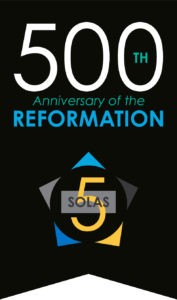
 Cross-cultural issues are always challenging for missionaries. When new churches are being planted in cultures that don’t have any tradition of Christian songs in the native language, one of the difficult questions missionaries face is what churches should sing during worship.
Cross-cultural issues are always challenging for missionaries. When new churches are being planted in cultures that don’t have any tradition of Christian songs in the native language, one of the difficult questions missionaries face is what churches should sing during worship.
It takes a long time to cultivate new hymns in the people’s language using music that is good and fitting to Christian worship as well as the local language and culture. Missionaries could, of course, translate good hymns from English into the target language, retaining the original tunes. This is a quick way to provide hymns for worship in new churches that have no hymn tradition in their own language.
The problem is that as good as these translated hymns may be, they’re often not in the “voice” of the people. For example, I’ve traveled several times to Brazil and had conversations with missionaries and native speakers about this problem. Brazilian churches have many hymns that were translated from English to Portuguese. These have provided a good repertory of Christian songs. But more often than not, singing Portuguese lyrics to melodies that were written to be sung with English lyrics is awkward.
You see, Portuguese is a Latin-based language in which every syllable is essentially the same length, giving the language a certain cadence and rhythm. English, on the other hand, is a Germanic language. The natural rhythm of the language is based on a stressed vowel sound and syllables of varying lengths.
Differences between various languages affect the rhythm and cadence of poetry. This in turn affects the rhythm and cadence of music used to accompany poetic lyrics. This is one of the fundamental differences between the music of different civilizations. Although missionaries have been successful in translating English hymns into Portuguese, the result just doesn’t feel natural to native Brazilians.
Creating new hymns in local languages is a challenge, but it’s not a new challenge. The great Reformer Martin Luther gives missionaries a perfect model to follow in cultivating a truly indigenous body of hymns.
Translation: The First Step toward Hymns in the Local Language
As part of Martin Luther’s theological and ecclesiastical reforms, he emphasized the need for congregational hymns in the language of the people. The Roman Church had retained Latin as its exclusive ecclesiastical language, so all hymns used in worship were in Latin.
“As part of Martin Luther’s theological and ecclesiastical reforms, he emphasized the need for congregational hymns in the language of the people.”
Luther, however, wanted to cultivate German hymns. The first natural step in that direction was to begin translating available Latin hymns into German. Translation, however, produced somewhat awkward hymns that didn’t feel right with the original Latin tunes. But Luther recognized that this is where the process must begin.
We can’t expect a local body of hymns to develop overnight. Christians in any culture shouldn’t ignore the vast wealth of Christian hymnody that has developed in the tradition of the church. Just as Luther recognized the value in beginning with translations of what was already available in Latin, so missionaries should recognize the importance of exposing new Christian believers to the great hymns of the church, even if the translations do not feel natural quite yet.
Composition: New Tunes for the Local Church
Luther’s desire was to cultivate a truly German hymnody, so his next step was to begin writing new German hymns of the same quality and character of the Latin hymns, but with poetry that fit the language. He still sometimes used tunes from the Latin tradition, but he recognized they were an awkward match for new German lyrics. Speaking of the challenge of composing new German hymns, he bemoaned: “But I would very much like to have a true German character. For to translate the Latin text and retain the Latin tone or notes has my sanction, though it doesn’t sound polished or well done. Both the text and notes, accent, melody, and manner of rendering ought to grow out of the true mother tongue and its inflection.”
Luther then tried a novel approach. He began to collect the best of German folk tunes to use with the new German texts. Sometimes this was successful, but other times the strong association of a tune with its secular lyrics caused distractions. Luther also introduced German sacred folk hymns into the church. These were Christian songs that had been written by Germans in years past, not for corporate worship (which had been in Latin) but for daily devotion. Many of these were fitting for the new German language services.
Finally, Luther encouraged Germans to write new tunes that flowed naturally from German syllabic stress. Even then, he and other musicians modeled their new tunes after the noble character of the Latin chant melodies, but they wrote the tunes so the cadence matched the stress-timed nature of the German language.
How Martin Luther’s Approach Inspires Mission Today
Luther benefited from the reality that Germany had a folk culture that had been heavily influenced by Christian values and had produced many good tunes of noble character. The one significant difference between Luther’s situation and what some missionaries face today is that some cultures are heavily influenced by pagan values and sensuality. There may be some folk music that can be used in such situations, but it’s more difficult to find. Some cultures don’t have the kind of sacred folk hymns that Germans had.
In order to cultivate a truly local body of hymns of good quality in both text and tune that feel natural to native speakers, missionaries may follow Luther’s example. They may begin by translating good Western hymns into the local language. Then once native speakers learn the imagery and beauty of Christian hymns, they can begin writing new lyrics in their language. Finally, native musicians can begin to write new tunes that fit the depth of biblical truth and flow naturally from the rhythm and cadence of their language.
One of the greatest heritages of the Reformation is a body of rich, beautiful hymns that has adorned the worship of God’s people around the world for five hundred years. Missionaries can continue this heritage by following Luther’s example in cultivating indigenous hymns of the same quality and worth.
Scott Aniol, PhD, is an author, speaker, and teacher of culture, worship, aesthetics, and church ministry philosophy. He is chair of the Worship Ministry Department at Southwestern Baptist Theological Seminary. He founded Religious Affections Ministries and serves as the editor of Artistic Theologian, a scholarly journal of worship and church ministry. He can be found on Twitter @ScottAniol.


